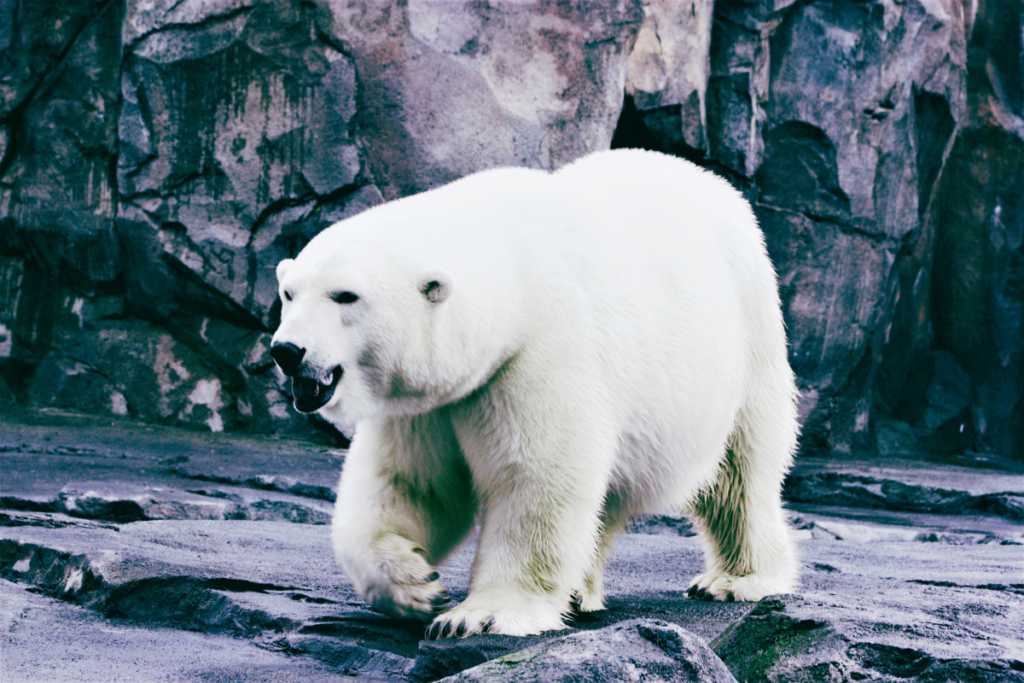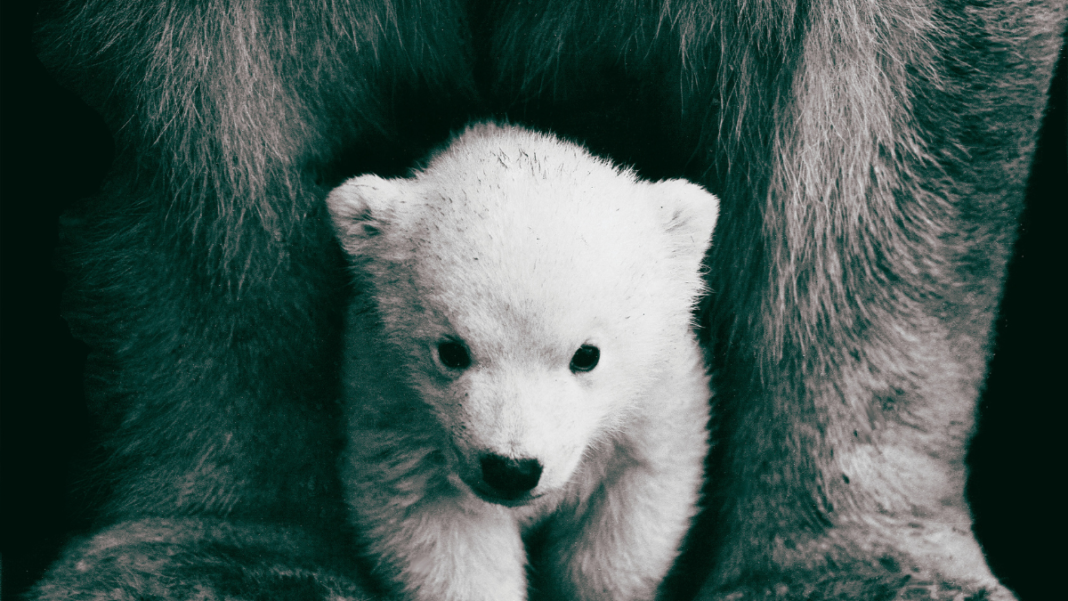Polar bears, the beautiful giants of the Arctic, are fascinating creatures that captivate the imagination. Known for their immense size and stark white fur, polar bears are uniquely adapted to survive in one of the most gruesome environments on Earth. In this article, HTC News will discuss interesting polar bear facts, shedding light on their remarkable characteristics and the challenges they face.

(more HTC News General Topics)
Polar Bears Are Classified as Marine Mammals
Because they invest most of their lives on the sea ice of the Arctic Ocean, relying on the ocean for their food and environment, these bears are the only bear breed considered marine mammals.
A Polar Bear’s Skin Is Black
These bears have jet-black skin beneath their thick fur. The fur is translucent and appears white because it reflects visible light, providing excellent camouflage in their snowy environment.
They Can Swim Constantly for Days at a Time
These bears are impressive swimmers, reaching up to 6 mph in the water. They can swim long distances continuously for many hours, using their large, paddle-like paws to navigate between ice floes.
Less Than 2% of Polar Bear Hunt Downs Are Successful
Despite spending about half their lives hunting, these bears succeed in less than 2% of their hunts. They primarily prey on ringed and bearded seals, using various strategies like breaking into pupping dens or ambushing seals at breathing holes.
Scientists Can Get Polar Bear DNA from Just Their Footprints
In a groundbreaking WWF and MIX Research project, scientists have developed a method to extract environmental DNA (eDNA) from polar bear footprints. This technique allows researchers to gain valuable insights into the bears’ diet and genetics, aiding conservation efforts.
Grizzly-Polar Bear Hybrids Exist
Genetic testing established the existence of polar bear-grizzly bear hybrids, known as ‘grolar bears’ or ‘pizzly bears,’ in 2006. These hybrids display characteristics of both species but are generally raised and behave like polar bears.
They Face More Threats Than Climate Change
While climate change is the greatest threat to these bears, other dangers include habitat destruction from oil exploration, toxic chemicals like pesticides, and increased human-polar bear conflicts. These threats compound the challenges these bears face in their struggle for survival.
There Are as Many as 19 Subgroups of Polar Bears
The global population of approximately 26,000 wild polar bears is divided into 19 subpopulations. One is increasing, five are stable, and four are in decline. The status of the remaining nine subpopulations remains unknown due to insufficient data.
Male Polar Bears Can Reach a Weight as Much as 10 People
Male polar bears can reach weights up to 800 kg, making them twice the size of females. They can also grow up to 3 meters long, solidifying their status as the world’s largest bear species and the largest land carnivore.
They Can Scent the Smell of Their Prey Up to a Kilometer Away
These bears possess an extraordinary sense of smell. They can detect seal breathing holes in the ice from nearly a kilometer away. They patiently wait by these holes to ambush seals as they come up for air.
Conclusion
These bears are extraordinary animals, uniquely adapted to the Arctic environment. From their classification as marine mammals to their incredible swimming abilities and keen sense of smell, these top predators play a pivotal role in the environment of the Arctic ecosystem. However, they face significant threats from climate change, habitat destruction, and human activities. Understanding and addressing this provocation is essential to secure the survival of these bears for future generations.
Frequently Asked Questions about Polar Bears
Why are these bears classified as marine mammals?
These bears are considered as marine mammals because they live most of their lives on sea ice, relying on the ocean for their food and habitat. They are the only bear species to have this classification.
What color is a polar bear’s skin?
The skin of a polar bear’ skin is jet black, which helps them absorb heat from the sun. Their fur is translucent and appears white when visible light is reflected off it.
How long can polar bears swim?
These bears can swim continuously for days, reaching up to 6 mph. Their large paws are adapted for swimming, allowing them to cover long distances between ice floes.
How successful are polar bears at hunting?
Less than 2% of polar bear hunt downs are successful. These bears primarily hunt seals, using various strategies to catch them, but they often face challenges due to the elusive nature of their prey.
How do scientists extract DNA from these bears?
Scientists extract environmental DNA (eDNA) from polar bear footprints by collecting snow from the tracks. This innovative procedure provides valuable insights into the bears’ diet and genetics for conservation efforts.
What other threats do these bears face besides climate change?
In addition to climate change, these bears face threats from habitat destruction due to oil exploration, exposure to toxic chemicals like pesticides, and increased human-polar bear conflicts as melting ice forces them closer to human settlements.
What are grizzly-polar bear hybrids?
Grizzly-polar bear hybrids, also known as ‘grolar bears’ or ‘pizzly bears,’ result from interbreeding between polar bears and grizzly bears. These hybrids exhibit characteristics of both species but are generally raised and behave like polar bears.
How many subpopulations of polar bears are there?
There are 19 recognized subgroups of polar bears. One is increasing, five are stable, four are in decline, and the status of the remaining nine is unknown due to insufficient data.
How large can male polar bears grow?
Male polar bears can reach the weight up to 800 kg (1760 lbs) and grow up to 3 meters (10 feet) long, making them the biggest bear species and the biggest land carnivore in the world.
How far can polar bears smell their prey?
These bears have a unique sense of smell. They can detect seal breathing holes in the ice from almost a kilometer away. They use this keen sense to locate and hunt their prey effectively.
read more: Interesting Things to Do at the African American Museum in Washington D.C.


